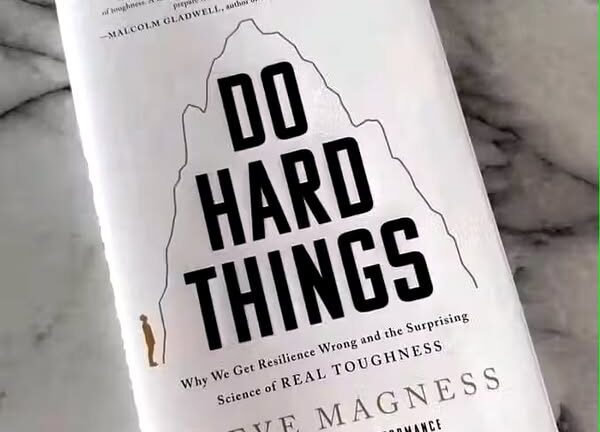What if everything we thought we knew about toughness was wrong? In Do Hard Things: Why We Get Resilience Wrong and the Surprising Science of Real Toughness, Steve Magness challenges the outdated idea that toughness is about brute force, suppression of emotions, or simply pushing through pain. Instead, he presents a new model of resilience—one based on self-awareness, adaptability, and inner strength.
But how do we develop real toughness in a world that often glorifies burnout and unrealistic expectations? What if true strength isn’t about gritting our teeth but about learning how to respond to challenges intelligently? Let’s explore the key lessons from Do Hard Things and redefine what it means to be truly tough.
Here are lessons from Do Hard Things
1. Real Toughness Isn’t About Ignoring Pain—It’s About Understanding It
Old-school toughness says, “Ignore pain and push through.” But true resilience comes from recognizing discomfort, interpreting what it’s telling us, and responding in a way that benefits long-term growth.
2. Self-Compassion Creates More Resilience Than Self-Criticism
Many believe toughness comes from being hard on yourself, but research shows the opposite. Treating yourself with kindness, especially in failure, builds mental strength and helps you recover faster.
3. Control Your Response, Not Your Environment
Tough people don’t try to control everything around them—they focus on how they respond. Adaptability, rather than rigid control, is the key to enduring and succeeding under pressure.
4. Emotions Are a Tool, Not a Weakness
Suppressing emotions doesn’t make you stronger—it makes you fragile. Learning to acknowledge, process, and use emotions strategically leads to better decision-making and endurance.
5. Confidence Comes from Preparation, Not Just Positive Thinking
Simply telling yourself “I can do this” isn’t enough. True confidence is built through preparation, small wins, and repeated exposure to difficulty, which strengthens your ability to handle stress.
6. The Best Performers Lean Into Discomfort—But Smartly
Instead of blindly pushing harder, resilient people learn to tolerate discomfort gradually. They expand their limits in a controlled way, allowing their mind and body to adapt over time.
7. Toughness Is About Staying Present Under Pressure
Instead of fearing future failure or dwelling on past mistakes, real toughness comes from staying engaged in the moment. Mindfulness and focus help maintain composure in high-stress situations.
8. Grit Isn’t About Never Quitting—It’s About Knowing When to Adapt
Perseverance is valuable, but so is knowing when to adjust your approach. Stubbornly sticking to a failing plan isn’t toughness—it’s a lack of awareness. True grit involves knowing when to pivot.
9. You Don’t Have to Be the Loudest Person in the Room to Be Tough
Many associate toughness with aggression or dominance. But quiet confidence, inner calm, and measured responses often define the strongest and most resilient individuals.
10. The Toughest People Find Meaning in Hardship
Hardship and struggle are inevitable, but those who develop real toughness don’t just endure them—they find meaning in them. They use challenges as opportunities for growth, rather than as roadblocks.
Toughness isn’t about brute strength, suppressing emotions, or pushing through blindly. In Do Hard Things, Steve Magness presents a new framework for resilience—one based on adaptability, self-awareness, and smart endurance.
So, the real question is: Are you willing to rethink what toughness means? Because the strongest people aren’t the ones who simply push harder—they’re the ones who learn how to navigate difficulty with intelligence and purpose.
BOOK: https://amzn.to/4lyoO0c





